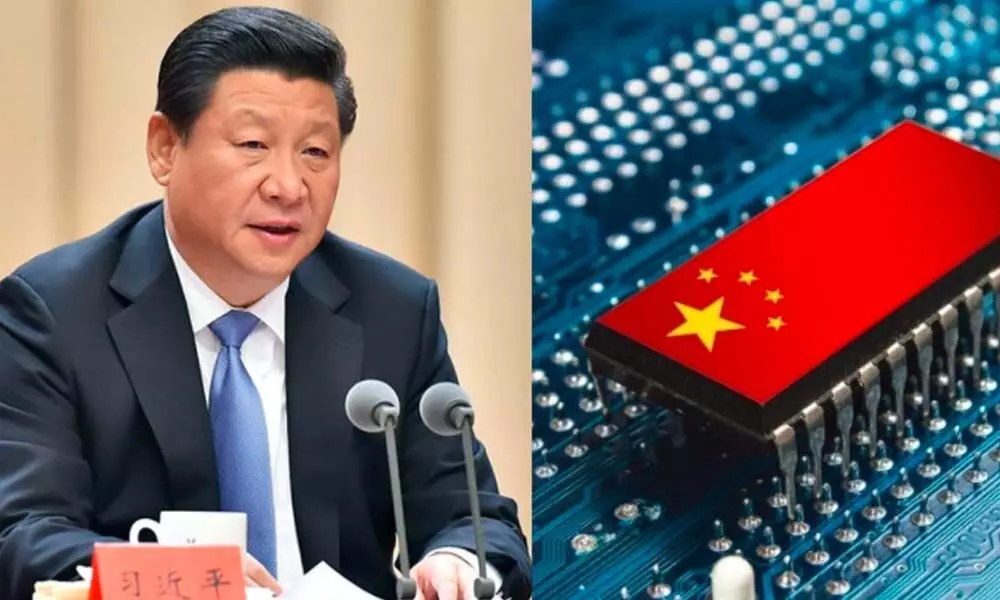Is China winning global chip battle?
Beijing wants to boost its semiconductor prowess, but instead the nation’s leading company is doubling down on mediocre technology
image for illustrative purpose

World leader Taiwan Semiconductor Manufacturing Co (TSMC) is making chips for Apple Inc and Intel Corp at 5 nanometer, and will introduce the even more advanced 3nm next year. On the other hand, China's SMIC produces items like screen controllers, among other less-advanced products. Thus, spending $11 billion on huge factories to churn out generic parts won't bridge the gap between SMIC and TSMC
Tim Culpan
Year after year, we hear about China's ambitions to become a leading contender in the global chip race. Yet time and again its companies and government make decisions that seem destined to ensure the nation remains an also-ran.
Latest among the befuddling choices is the Shanghai government signing on to own up to 25 per cent of a massive new factory that Semiconductor Manufacturing International Corp (SMIC) intends to build. The $8.9 billion budget for this facility adds to a $2.35 billion plant that SMIC is already planning 800 miles south in Shenzhen. That earlier project will also be minority held and funded by the local government.
What's astounding about these plans is that they'll create a huge amount of manufacturing capacity for technologies that are more than a decade old. Both the Shanghai and Shenzhen fabs will be dedicated to 28-nanometer nodes and above, the kind used for less energy- and resource-sensitive applications such as controlling electric windows or running windshield wipers. By comparison, world leader Taiwan Semiconductor Manufacturing Co (TSMC) is making chips for Apple Inc and Intel Corp at 5 nanometer, and will introduce the even more advanced 3nm next year.
If SMIC could press the start button on these two new factories today, the total capacity of 140,000 wafers per month would go a long way toward solving the current chip shortage. Auto manufacturers are particularly hard hit because poor planning during the early days of the pandemic last year means they're now unable to install the sensors, screens and electronics required to build a modern car. Most of those chips are made at the 28-nanometer node.
But two problems come to mind when looking at this large capital allocation. First, it'll take two to three years for those factories to come on stream, by which time the current shortage will be ameliorated, with a drop in prices a likely result. China's lack of self-sufficiency in the equipment, materials and software required to build chips will further complicate capacity expansion.
Second, China's dream isn't to be a global powerhouse in components that brush water off your car. It wants to design and make the chips that drive a vehicle autonomously. In June, Beijing anointed Vice Premier Liu He to be its new chip czar, in a move that highlights just how seriously President Xi Jinping takes the task of creating a leading semiconductor sector at home. Despite pumping at least $51 billion into two separate funds since 2014 to help domestic players catch up with overseas rivals, there's been little progress in closing the gap.
For that you need engineers to be focused on leading-edge and niche products that sell for hundreds of dollars, not mass-market components that go for pennies. Chinese EV player Xpeng Inc, for example, uses artificial intelligence chips from US designer Nvidia Corp that sell for up to $999 apiece, while parts that control a car's display cost $1. TSMC makes Nvidia's best semiconductors; SMIC produces items like screen controllers, among other less-advanced products.
Thus, spending $11 billion on huge factories to churn out generic parts won't bridge the gap between SMIC and TSMC. And it's not just money that's going to waste. Engineering talent is also in short supply. Turnover at Chinese chip manufacturers is among the highest in the industry, while SMIC pays its staff well below the levels offered at TSMC and nearest rival United Microelectronics Corp, Bloomberg Intelligence analyst Charles Shum wrote. Having your workforce focused on squeezing out efficiency gains will most assuredly boost margins and raise profits, but that also means talent isn't put toward solving leading-edge challenges in semiconductor manufacturing.
SMIC and its peers, like Hua Hong Semiconductor Ltd will probably be okay. An increasingly connected world and growing Chinese consumer base means that there'll always be demand for the low-end products they've decided they want to dominate. They'll face stiff competition from GlobalFoundries Inc, a US rival that earlier this year announced a $4 billion Singapore expansion aimed at the same broad category of products SMIC is chasing.
But at least it won't be tackling TSMC head on, nor the other industry leaders, Samsung Electronics Co and Intel. That's a safe move. The Chinese leader never has to worry about losing the global chip battle if it doesn't enter the race. It will have no problem comfortably maintaining its domestic dominance while garnering subsidies and investments from local governments eager to burnish their tech credentials.
Unfortunately for China, writing big checks to fund timid moves will neither make the nation a global semiconductor powerhouse nor further its goals of technology independence. For Beijing to make that happen, it'll need to find a new national hero. (Bloomberg)

